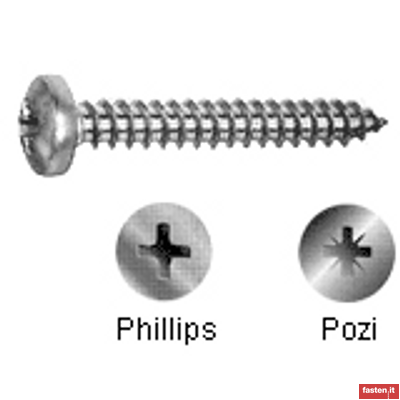Introduction
When it comes to the world of fasteners, the variety can be overwhelming. From nuts and bolts to screws of all shapes and sizes, it’s essential to understand the right tool for the job. One type of screw that has gained immense popularity is the cross recessed tapping screw. In this article, we’ll delve into the world of these versatile fasteners, answering frequently asked questions to help you better understand their applications and advantages.
FAQ
- What Is a Cross-Recessed Tapping Screw?
- A cross-recessed tapping screw, often referred to as a Phillips screw or screwdriver, is a type of fastener with a unique cross-shaped indentation on its head. This design allows for efficient torque transfer and ease of use with a Phillips screwdriver, making it a popular choice in various applications.
- Why Choose Cross-Recessed Tapping Screws?
- Cross-recessed tapping screws are preferred for their ease of installation, preventing cam-out (slipping of the screwdriver) and providing a secure grip on the fastener. They are excellent for woodworking, electronics, and many other industries.
- What Are the Common Types of Cross-Recessed Tapping Screws?
- There are several types of cross-recessed tapping screws, each with its specific design. Common types include Phillips, Pozidriv, and JIS (Japanese Industrial Standard) screws. The choice depends on the specific application and the region’s prevalent standards.
- Where Are Cross-Recessed Tapping Screws Most Useful?
- Cross-recessed tapping screws are versatile and find application in various industries. They are particularly useful in woodworking, cabinet making, electronics, and automotive assembly. Their design ensures a secure hold and prevents damage to delicate materials.
- How Do You Select the Right Size and Length?
- Selecting the appropriate size and length of cross-recessed tapping screws is crucial. Ensure the screw’s diameter matches the hole size and that the length provides enough engagement to securely hold the materials together. Consider the depth of the material and any additional components.
- What Are Some Tips for Effective Installation?
- To ensure a successful installation, follow these tips:
- Use a correctly sized Phillips screwdriver.
- Apply consistent pressure to prevent stripping.
- Use a pilot hole for hardwoods and metals.
- Avoid overtightening, as this can cause damage.
- Are Cross-Recessed Tapping Screws Reusable?
- While they can be removed and reused in some cases, it’s advisable to use new screws for critical applications. Repeated use can cause wear and reduce their effectiveness.
- Can Cross-Recessed Tapping Screws Be Used in Outdoor Applications?
- Yes, cross-recessed tapping screws are suitable for outdoor applications, but you should choose the right material. Stainless steel or other corrosion-resistant options are ideal for preventing rust and degradation when exposed to the elements.
Conclusion
Cross-recessed tapping screws have revolutionized the world of fasteners, offering ease of use and reliability in a variety of applications. Understanding their types, applications, and installation techniques is essential for anyone working with screws in different projects. So, whether you’re a professional woodworker or a DIY enthusiast, these screws are a valuable addition to your toolbox, making your projects more secure and efficient.
